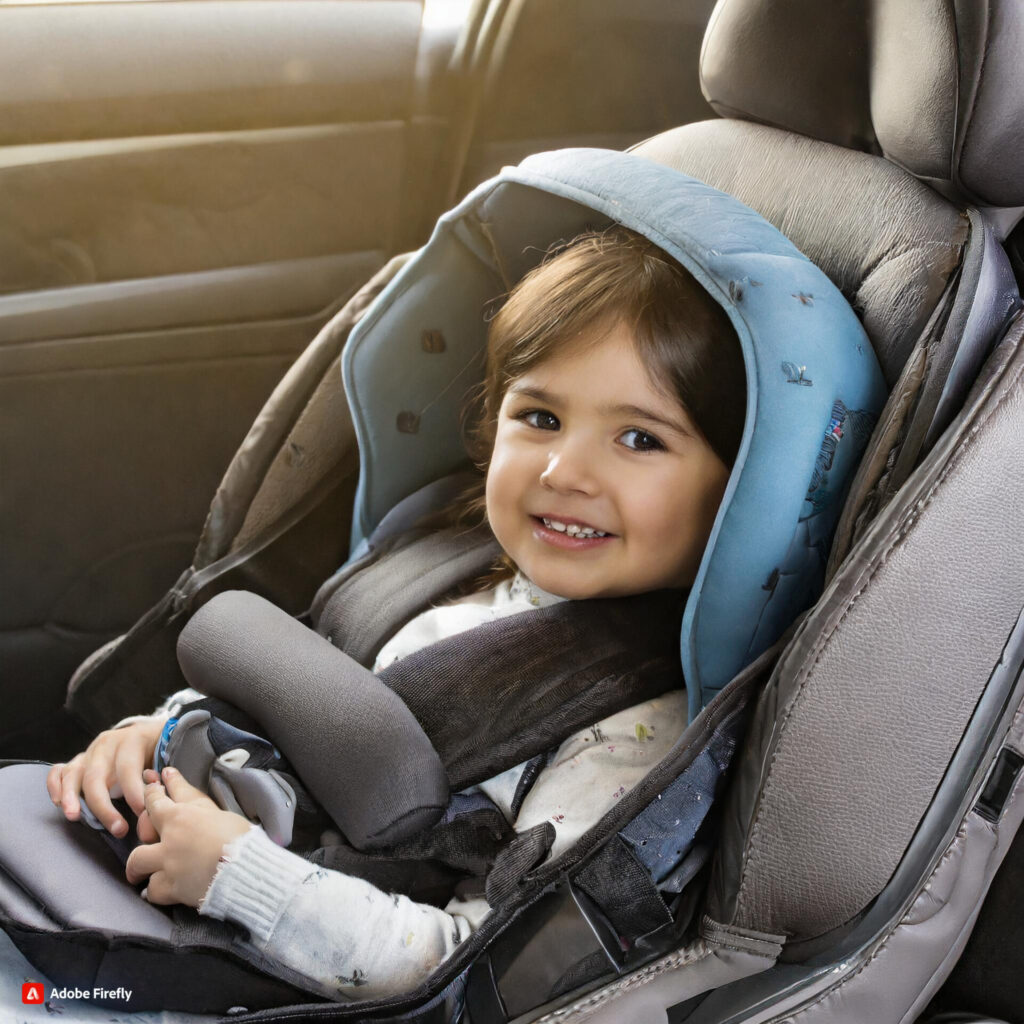When Is Your Baby Too Big for an Infant Car Seat?

A Cozy Cradle, But Not Forever: Every parent knows the comfort and convenience of infant car seats. These snug transporters cradle your little one during car journeys, making them ideal for quick trips and keeping them secure in the early months. But, as your precious bundle of joy blossoms, the question arises: when is my baby too big for an infant car seat?
Understanding Your Infant Car Seat: Before diving into the telltale signs, let’s revisit the purpose and limitations of infant car seats. These seats are designed for newborns and infants, typically offering comfortable support until around 2 years old. They are usually rear-facing, providing optimal safety for a growing child’s head and neck. However, they have weight and height limitations, which are crucial to understand for your child’s safety and comfort.
Signs Your Baby is Too Big for an Infant Car Seat
Your little one may be telling you it’s time for a new ride! Here are the key indicators that your baby has outgrown their infant car seat:
Height Limit
Every car seat manufacturer specifies a maximum height limit for their product. This information is usually found on a label on the car seat itself or in the instruction manual. Most infant car seats have a height limit between 30-32 inches. Ensure there’s also at least one inch of space between your baby’s head and the top of the car seat shell for proper head movement and safety.
Weight Limit
While exceeding the weight limit (typically 22–35 pounds) is less common, it’s still important to consider. An overloaded car seat can compromise its effectiveness in protecting your child during a collision.
Legroom
Your baby’s legs should not be uncomfortably bent when strapped into the car seat. If their knees are cramped, it not only affects their comfort but also indicates they’ve outgrown the seat’s legroom capacity.
Additional Factors to Consider:
- Age: While age can be a general indicator, it shouldn’t be the sole factor. Always prioritize the specific height, weight, and headspace requirements mentioned above.
- Consult your pediatrician: If you have any concerns about your child’s car seat fit or have questions about transitioning them to a new seat, don’t hesitate to consult your pediatrician. Their expertise can provide valuable guidance and reassurance.
Choosing the Next-Stage Car Seat:
Now that you know the signs, it’s time to explore the world of “bigger” car seats! Here are the two main options to consider:
Convertible Car Seat
This versatile option transitions from rear-facing (recommended for as long as possible) to forward-facing once your child meets the height and weight requirements. Convertible car seats typically have higher weight and height limits compared to infant car seats, making them a long-lasting investment.
Rear-Facing-Only Car Seat
If you plan on keeping your child rear-facing for an extended period (which is the safest position!), you can opt for a rear-facing-only car seat. These seats are designed specifically for rear-facing use and often have higher weight and height limits compared to traditional infant car seats.
Safety First: Essential Reminders:
As parents, our top priority is always our children’s safety. Here are some crucial reminders when transitioning your child to a new car seat:
Importance of Rear-Facing
The American Academy of Pediatrics (AAP) recommends keeping children rear-facing for as long as possible, ideally until they reach the maximum height or weight limit allowed by their rear-facing car seat. This position offers significantly better protection in case of a crash compared to forward-facing.
Follow manufacturer’s Instructions
Every car seat comes with a detailed instruction manual. Always follow these instructions meticulously for proper installation and safe usage of the car seat. This includes information on how to adjust the straps, recline angle, and harness for a secure and comfortable fit for your growing child.
Never Use Expired or Damaged Car Seats
Expired car seats may have degraded materials and compromised safety features. Similarly, damaged car seats can be unsafe. Always check the expiration date on your car seat and inspect it regularly for any damage or wear and tear. Replace your car seat if it is expired or damaged to ensure your child’s safety.
Conclusion
Recognizing the signs that your baby has outgrown their infant car seat is essential for their continued safety and comfort on the road. By following the guidelines above and choosing the right next-stage car seat, you can ensure your little one enjoys secure and enjoyable car journeys throughout their growth and development stages.
FAQs
Is my baby too big for an infant car seat?
If your baby’s head is within 1 inch of the car seat top, their legs are cramped, or they reach the weight/height limits, it’s time for a new seat.
At what age do babies outgrow infant car seats?
Age isn’t the best indicator; prioritize checking height, weight, and headspace limitations for your specific infant car seat.
How long should an infant be in a car seat?
There’s no published limit, but experts recommend removing infants from car seats every 2 hours for stretching and feeding, prioritizing frequent breaks during long trips.
What are the car seat stages?
There are 4 car seat stages that typically progress from rear-facing infant to convertible (rear and forward-facing) or rear-facing only, then to a booster seat, and finally to a regular seat belt.
Can a newborn ride alone in the back seat?
Absolutely not. Newborns should never ride alone in any car seat, whether in the back seat or anywhere else. They require constant supervision and cannot safely manage on their own.
Is holding a baby in a sitting position bad?
Holding a baby in a sitting position is generally not recommended for babies who cannot yet hold their head up independently (typically around 3–4 months) as their neck muscles are still developing. . So, avoid forcing them to sit, but holding them in a supported sitting position once they have head control is generally okay.
